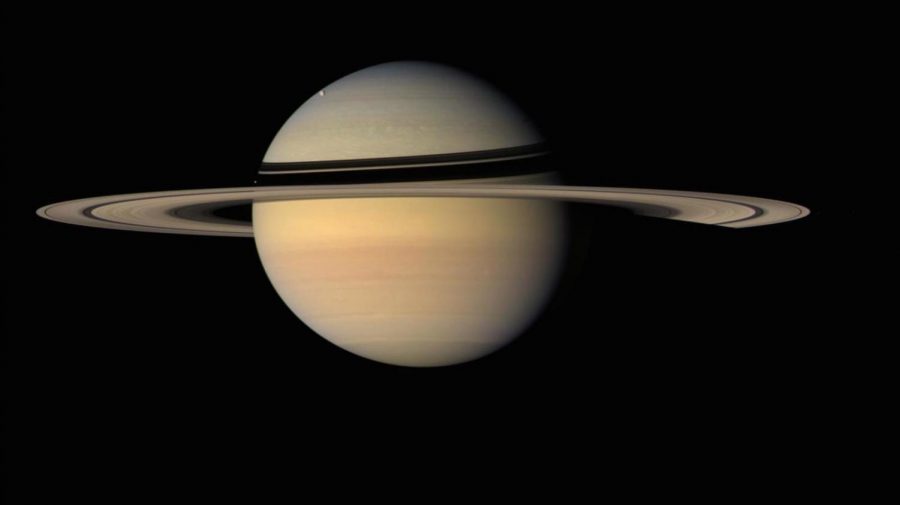NASA Warns: Saturn is losing its ring at an extremely fast pace
December 21, 2018
According to NASA Goddard’s tweet on December 17, Planet Saturn’ s famous ring will be completely gone in less than 100 million years due to it being pulled toward Saturn by its gravity.
The rings of Saturn are mainly composed of water, ice, and some rock mineral, ranging from small dust to bus-sized boulders. Ultraviolet ray from the sun and plasma cloud charged these icy
particles and caused them to be bound to the magnetic field. They will be pulled into Saturn by its gravity flows along the magnetic field and will become rain when it in contact with Saturn’s upper
atmosphere.
“We estimate that this ‘ring rain’ drains an amount of water products that could fill an Olympicsized swimming pool from Saturn’s rings in half an hour,” said Dr. James O’Donoghue, a scientist from the NASA’s Goddard Space Flight Center.
Also, an interesting reaction happened when the rain came down to Saturn. After the vaporization of the icy particles, the water chemically reacts with Saturn’s atmosphere, and what come out of it is that the lifespan of the H3+ ions increased. When this ion is energized by sunlight, it will glow in infrared light (a type of light that is invisible to human eye, examples are Gamma
rays, X-rays, ultraviolet light, etc.).
The light can be observed using the Keck Telescope in Hawaii with special instrument attached onto it. In fact, it is this light that helped the scientists on determining the amount of rain.
Saturn’s ring was first discovered by Galileo in 1610, although he could not identify it as a ring and though Saturn is composed of 3 celestial bodies, but it was later confirmed by other observers that it is multiple “rings” that are surrounding Saturn.
Although 100 million years is still far away from current times, but compared to the age of Saturn, which is approximately 4.5 billion years old, it is just a blink of the eye.
“We are lucky to be around to see Saturn’s ring system, which appears to be in the middle of its lifetime. However, if rings are temporary, perhaps we just missed out on seeing giant ring systems of Jupiter, Uranus and Neptune, which have only thin ringlets today!” O’Donoghue stated.
Source:
https://twitter.com/NASAGoddard/status/1074717188530036737
https://go.nasa.gov/2Ex7J5z
https://en.wikipedia.org/wiki/Rings_of_Saturn







